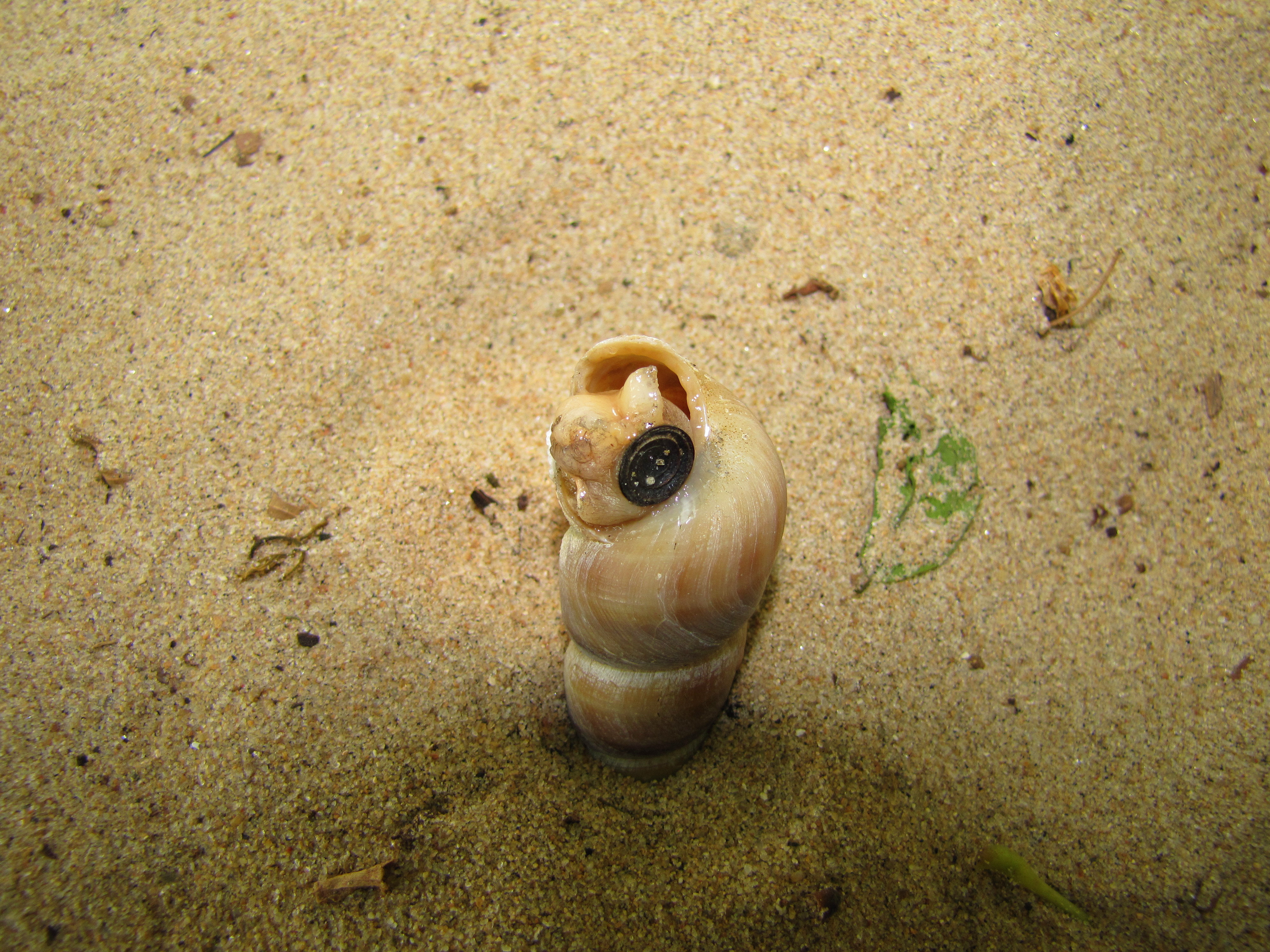|
Turritellenplatte
The Turritellenplatte of Ermingen ("Erminger Turritellenplatte" near Ulm, Germany) is a type of very rich, fossil-bearing rock which is of particular interest to geologists and paleontologists. It occurs in a very restricted outcrop and is protected in its entirety as a natural monument. This outcrop of these marine sedimentary rocks is situated in the northern part of the North Alpine Foreland Basin (NAFB) and it is famous for a superabundance of shells of the sea snail '' Turritella turris'', a marine gastropod mollusk in the family Turritellidae. The fauna of this gastropod-rich sandstone reflects mainly near-coastal and shallow marine conditions. Petrographical and palaeontological data allow a correlation of the ''Turritellenplatte'' of Ermingen with Burdigalian (Lower Miocene). The Sr-isotope composition of shark Sharks are a group of elasmobranch cartilaginous fish characterized by a ribless endoskeleton, dermal denticles, five to seven gill slits on each side, an ... [...More Info...] [...Related Items...] OR: [Wikipedia] [Google] [Baidu] |
Turritellidae
Turritellidae, with the common name "tower shells" or "tower snails", is a Taxonomy (biology), taxonomic family (biology), family of small- to medium-sized sea snails, marine gastropod molluscs in the Sorbeoconcha clade. They are filter feeders; this method of feeding is somewhat unusual among gastropod mollusks, but is very common in bivalves. Shell description The shells of turritellid species have whorl (mollusc), whorls that are more convex and their aperture (mollusc), apertures being more circular than it is in the auger shells, which are similarly high-spired. The Columella (gastropod), columella is curved and the thin Operculum (gastropod), operculum has many horns. Anatomy of the soft parts These snails burrow into mud or sand, with their feet being relatively small. Taxonomy The following genera are recognised in the family Turritellidae: ;†Omalaxinae * †''Omalaxis'' Deshayes, 1832 ;Orectospirinae * ''Orectospira'' Dall, 1925 ;Pareorinae * †''Batillon ... [...More Info...] [...Related Items...] OR: [Wikipedia] [Google] [Baidu] |
Turritella Turris
''Turritella'' is a genus of medium-sized sea snails with an operculum, marine gastropod mollusks in the family Turritellidae.Vos, C.; Gofas, S. (2013). Turritella Lamarck, 1799. Accessed through: World Register of Marine Species at http://www.marinespecies.org/aphia.php?p=taxdetails&id=138615 on 2013-06-02 They have tightly coiled shells, whose overall shape is basically that of an elongated cone. The name ''Turritella'' comes from the Latin word ''turritus'' meaning "turreted" or "towered" and the diminutive suffix ''-ella''. Species Valid Valid species within the genus ''Tarantella'' are listed below. Fossil species are marked with a dagger "†". * '' Turritella acropora'' (Dall, 1889) * '' Turritella albolapis'' Finlay, 1924 * '' Turritella algida'' Melvill & Standen, 1912 * '' Turritella anactor'' Berry, 1957 * '' Turritella annulata'' Kiener, 1843 * † '' Turritella apicalis'' - Pleistocene of Florida * '' Turritella attenuata'' Reeve, 1849 * '' Turritella aurocincta ... [...More Info...] [...Related Items...] OR: [Wikipedia] [Google] [Baidu] |
Burdigalian
The Burdigalian is, in the geologic timescale, an age (geology), age or stage (stratigraphy), stage in the early Miocene. It spans the time between 20.43 ± 0.05 annum, Ma and 15.97 ± 0.05 Ma (million years ago). Preceded by the Aquitanian (stage), Aquitanian, the Burdigalian was the first and longest warming period of the MioceneEdward Petuch, Ph.D. Florida Atlantic University, Department of Geosciences. and is succeeded by the Langhian. Stratigraphic definition The name Burdigalian comes from ''Burdigala'', the Latin name for the city of Bordeaux, France. The Burdigalian Stage was introduced in scientific literature by Charles Depéret in 1892. The base of the Burdigalian is at the first appearance of foram species ''Globigerinoides altiaperturus'' and the top of magnetic chronozone C6An. , an official GSSP for the Burdigalian had not yet been assigned. The top of the Burdigalian (the base of the Langhian) is defined by the first appearance of foram species ''Praeorbulina gl ... [...More Info...] [...Related Items...] OR: [Wikipedia] [Google] [Baidu] |
Germany
Germany, officially the Federal Republic of Germany, is a country in Central Europe. It lies between the Baltic Sea and the North Sea to the north and the Alps to the south. Its sixteen States of Germany, constituent states have a total population of over 84 million in an area of , making it the most populous member state of the European Union. It borders Denmark to the north, Poland and the Czech Republic to the east, Austria and Switzerland to the south, and France, Luxembourg, Belgium, and the Netherlands to the west. The Capital of Germany, nation's capital and List of cities in Germany by population, most populous city is Berlin and its main financial centre is Frankfurt; the largest urban area is the Ruhr. Settlement in the territory of modern Germany began in the Lower Paleolithic, with various tribes inhabiting it from the Neolithic onward, chiefly the Celts. Various Germanic peoples, Germanic tribes have inhabited the northern parts of modern Germany since classical ... [...More Info...] [...Related Items...] OR: [Wikipedia] [Google] [Baidu] |
Geologist
A geologist is a scientist who studies the structure, composition, and History of Earth, history of Earth. Geologists incorporate techniques from physics, chemistry, biology, mathematics, and geography to perform research in the Field research, field and the laboratory. Geologists work in the Energy industry, energy and mining sectors to exploit Natural resource, natural resources. They monitor environmental hazards such as earthquakes, volcanoes, tsunamis and landslides. Geologists are also important contributors to climate change discussions. History James Hutton is often viewed as the first modern geologist. In 1785 he presented a paper entitled ''Theory of the Earth'' to the Royal Society of Edinburgh. In his paper, he explained his theory that the Earth must be much older than had previously been supposed to allow enough time for mountains to be eroded and for sediments to form new rocks at the bottom of the sea, which in turn were raised up to become dry land. Hutton pub ... [...More Info...] [...Related Items...] OR: [Wikipedia] [Google] [Baidu] |
Paleontologist
Paleontology, also spelled as palaeontology or palæontology, is the scientific study of the life of the past, mainly but not exclusively through the study of fossils. Paleontologists use fossils as a means to classify organisms, measure geologic time, and assess the interactions between prehistoric organisms and their natural environment. While paleontological observations are known from at least the 6th century BC, the foundation of paleontology as a science dates back to the work of Georges Cuvier in 1796. Cuvier demonstrated evidence for the concept of extinction and how life of the past was not necessarily the same as that of the present. The field developed rapidly over the course of the following decades, and the French word ''paléontologie'' was introduced for the study in 1822, which was derived from the Ancient Greek word for "ancient" and words describing relatedness and a field of study. Further advances in the field accompanied the work of Charles Darwin who popu ... [...More Info...] [...Related Items...] OR: [Wikipedia] [Google] [Baidu] |
Gastropod Shell
The gastropod shell is part of the body of many gastropods, including snails, a kind of mollusc. The shell is an exoskeleton, which protects from predators, mechanical damage, and dehydration, but also serves for muscle attachment and calcium storage. Some gastropods appear shell-less (slugs) but may have a remnant within the mantle, or in some cases the shell is reduced such that the body cannot be retracted within it (semi-slug). Some snails also possess an operculum that seals the opening of the shell, known as the Aperture (mollusc), aperture, which provides further protection. The study of mollusc shells is known as conchology. The biological study of gastropods, and other molluscs in general, is malacology. Shell morphology terms vary by species group. Shell layers The gastropod shell has three major layers secreted by the Mantle (mollusc), mantle. The calcareous central layer, ostracum, is typically made of calcium carbonate (CaCO3) precipitated into an organic matrix ... [...More Info...] [...Related Items...] OR: [Wikipedia] [Google] [Baidu] |
Sea Snail
Sea snails are slow-moving marine (ocean), marine gastropod Mollusca, molluscs, usually with visible external shells, such as whelk or abalone. They share the Taxonomic classification, taxonomic class Gastropoda with slugs, which are distinguished from snails primarily by the absence of a visible Gastropod shell, shell. Definition Determining whether some gastropods should be called sea snails is not always easy. Some species that live in brackish water (such as certain Neritidae, neritids) can be listed as either freshwater snails or marine snails, and some species that live at or just above the high tide level (for example, species in the genus ''Truncatella (gastropod), Truncatella'') are sometimes considered to be sea snails and sometimes listed as land snails. Anatomy Sea snails are a very large and diverse group of animals. Most snails that live in salt water respire using a gill or gills; a few species, though, have a lung, are intertidal, and are active only at low tide w ... [...More Info...] [...Related Items...] OR: [Wikipedia] [Google] [Baidu] |
Marine (ocean)
The ocean is the body of salt water that covers approximately 70.8% of Earth. The ocean is conventionally divided into large bodies of water, which are also referred to as ''oceans'' (the Pacific, Atlantic, Indian, Antarctic/Southern, and Arctic Ocean),"Ocean." ''Merriam-Webster.com Dictionary'', Merriam-Webster, https://www.merriam-webster.com/dictionary/ocean . Accessed March 14, 2021. and are themselves mostly divided into seas, gulfs and subsequent bodies of water. The ocean contains 97% of [...More Info...] [...Related Items...] OR: [Wikipedia] [Google] [Baidu] |
Gastropod
Gastropods (), commonly known as slugs and snails, belong to a large Taxonomy (biology), taxonomic class of invertebrates within the phylum Mollusca called Gastropoda (). This class comprises snails and slugs from saltwater, freshwater, and from the land. There are many thousands of species of sea snails and sea slug, slugs, as well as freshwater snails, freshwater limpets, land snails and slugs. The class Gastropoda is a diverse and highly successful class of mollusks within the phylum Mollusca. It contains a vast total of named species, second only to the insects in overall number. The fossil history of this class goes back to the Furongian, Late Cambrian. , 721 family (taxonomy), families of gastropods are known, of which 245 are extinct and appear only in the fossil record, while 476 are currently neontology, extant living fossil, with or without a fossil record. Gastropoda (previously known as univalves and sometimes spelled "Gasteropoda") are a major part of the phylum Mo ... [...More Info...] [...Related Items...] OR: [Wikipedia] [Google] [Baidu] |
Mollusk
Mollusca is a phylum of protostomic invertebrate animals, whose members are known as molluscs or mollusks (). Around 76,000 extant species of molluscs are recognized, making it the second-largest animal phylum after Arthropoda. The number of additional fossil species is estimated between 60,000 and 100,000, and the proportion of undescribed species is very high. Many taxa remain poorly studied. Molluscs are the largest marine phylum, comprising about 23% of all the named marine organisms. They are highly diverse, not just in size and anatomical structure, but also in behaviour and habitat, as numerous groups are freshwater and even terrestrial species. The phylum is typically divided into 7 or 8 taxonomic classes, of which two are entirely extinct. Cephalopod molluscs, such as squid, cuttlefish, and octopuses, are among the most neurologically advanced of all invertebrates—and either the giant squid or the colossal squid is the largest known extant i ... [...More Info...] [...Related Items...] OR: [Wikipedia] [Google] [Baidu] |







